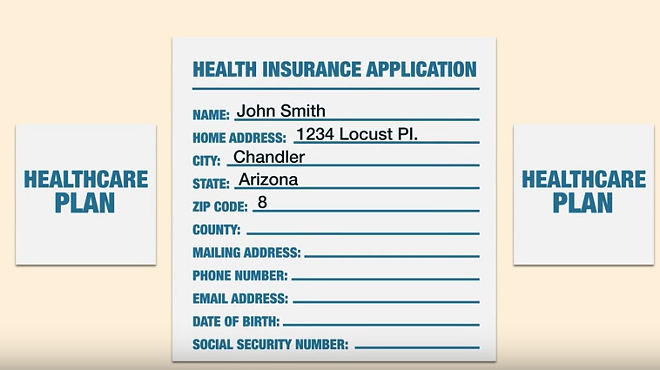t claims more lives annually than car accidents or gun violence, tarnishing lives, ruining marriages, emptying bank accounts and wrecking careers. And with the Institute of Medicine reporting that 100 million Americans suffer from chronic pain, the use of prescription opioids— and the subsequent addiction and fallout it may cause—has quadrupled since 1999.
With 91 Americans succumbing to opioid overdose each and every day, the use of drugs such as oxycodone, hydrocodone and methadone have also quadrupled, according to a 2017 World Drug Report drafted by the United Nations. According to that report, the United States, accounting for 4 percent of the world's population, logs 27 percent of overdoses worldwide. It's enough that in 2011, the Centers for Disease Control and Prevention declared a prescription drug epidemic as a result of doctors overprescribing painkillers.
T"This was not some emergency, drug-fueled failure that left patients high-and- dry while Dr. O'Neill laid around getting high," — Carsen O'Neill
tweet this
he reality of the epidemic hit patients and family members this summer, when local orthodontist, Dr. Casey O'Neill, abruptly shut his practice. As rumors swirled, O'Neill penned a two-page letter to his patients citing health concerns. Two weeks later, the Oregon Board of Dentistry released a report detailing the circumstances.
O'Neill, whose struggles with alleged opioid, heroin and cocaine abuse were detailed at length in a July. 14 report released by the Board, had his license "immediately suspended" on July. 1 for allegedly breaking the terms of a Health Professionals' Services Program—a state monitoring program for healthcare providers facing addiction and alcohol issues.
OBD Executive Director Stephen Prisby wrote that O'Neill posed, "A serious threat to the public health and safety," thereby warranting the suspension. Prisby was unable to comment on the specifics of the case, but noted that, "for Board licensees with a diagnosis of substance use disorder, HPSP provides a voluntary, non-disciplinary option to get treatment, establish a recovery program and be eligible to practice. The identities of licensees enrolled in HPSP and in good standing with that program, will remain confidential to the Board and not a matter of public record," noted Prisby. Since O'Neill had failed to report to six randomly scheduled drug tests earlier this year, as noted in the report, he effectively breached his agreement with the Board.
Dr. O'Neill's family takes issue with two things: That the information provided in the report was provided by the doctor in trust and in confidentiality when O'Neill initially sought treatment at an inpatient clinic in La Pine, and that those details should never have been made public.
The family also disputes any claim that O'Neill was using illegal drugs during work hours and maintains that he was clean for nine months before the Board suspended his license. "This was not some emergency, drug-fueled failure that left patients high-and- dry while Dr. O'Neill laid around getting high," says brother Carsen O'Neill, "...In the nearly eight years before all this came out, O'Neill Orthodontics had zero complaints, infractions, lawsuits or accusations of misconduct of any kind."
But how?
How does a once prominent orthodontist who graduated in the top 5 percent of his class, a father of two, begin allegedly smoking heroin and allegedly taking cocaine on weekends to deal with the fallout of prescription pain addiction?
"By the time he leaves San Francisco to begin his dream of owning his own medical practice...(he's) amassed an incredible student-loan debt," says Carsen O'Neill, who notes that most of Casey's colleagues either took over an older practice or joined an established one. "He opens his business at the height of the last great recession (in 2009)...and after another few bank loans to purchase equipment and lease space...his debt is astonishing."
Brother Carsen said that as O'Neill began his practice, an old back injury flared up, "greatly exacerbated by the long hours of hunching over that dentistry demands." Seeking help, a doctor prescribed opioids, and according to the Board's report, by 2009, O'Neill was taking hydrocodone at a rate of 5mg, 20 to 30 times per month. In a span of a few months, the report states that his consumption grew to 10 mg, 30 times per month, and by 2014, it escalated to 30mg of Oxycodone, six times per day.
Carsen O'Neill laments: "The slow escalation to (the) considerably more powerful Oxycodone over the next seven years is entirely prompted and facilitated by his doctors...there are not sufficient counseling check-ins implemented." By December. 2015, Carsen O'Neill said Casey realized he was "hopelessly dependent on these narcotics," and was weaned off by his doctor over a period of five months.
Facing severe withdrawals, Carsen says Casey was at a loss about how to cope, but a "professional colleague" suggested using heroin.
"Opiate addicts, like other addicts have many barriers to accessing and engaging and completing treatment," says Karen Tamminga, adult intensive outpatient supervisor at Deschutes County Behavioral Health. "...Many have chronic pain conditions that keep them stuck in the addiction cycle."
Whereas physicians, dentists and nurses are about as likely as the general public to abuse alcohol, they're more likely to misuse prescription drugs, according to a 2013 report published in the Journal Of Addiction Medicine. Of the 55 studied, a whopping 69 percent abused prescription drugs, with most stating they "turned to prescription drugs to relieve stress and physical or emotional pain."
Carsen O'Neill said his family eventually started to notice Casey's "...lack of passion, exhaustion and depression." He notes, "...having literally cut himself off from getting prescription narcotics, this became his only physical tool to ease the incredible discomfort of opioid dependence and withdrawal." Carsen says he smoked "heroin at home only at night, when the kids have gone to bed," adding that "the embarrassment of having to do so, and the determination to shield his loved ones and associates from the truth of his withdrawal, being a powerful motivator to show restraint."
The family pauses to note, repeatedly, that it is only during that five month period where Casey was reported to be using heroin and cocaine, and was no longer using opioids.
"By the end of the day, he is suffering withdrawal symptoms and starts to obsess over them, living his afternoons in agony while he waits for his children to get to bed so he can feel normal again," Carsen O'Neill said.
It was August of 2016 that Carsen says Casey started to "...augment his exhaustion with cocaine during his personal time after work, but never brings drugs into his workplace." In October 2016, Casey entered a seven-day detox in La Pine, the family stating he self reported himself to the Board on the very same day. In November, doctors diagnosed O'Neill with severe opioid use disorder, beginning intensive outpatient treatment, Carsen O'Neill said.
"He is drug tested randomly between November, 2016 and July 2017," says Carsen, "He passes every screening clean and completes outpatient treatment in full compliance. This was something he did himself, for himself."
As O'Neill attended the outpatient rehab, the Board monitored him with additional drug tests, costing $800 a month, Carsen recounts, adding that his brother missed six scheduled tests partially because of a "wedding in Arizona with his family for a week between May and June 2017."
Carsen said Casey submitted "a clean urinalysis upon his return, but due to the disagreement with HPSP, it has already been submitted to the Oregon Dental Board as a 'non-compliance,' prompting the emergency suspension."
Outrage, compassion
Numerous patients we spoke to say they're outraged that the Board allowed Dr. O'Neill to continue practicing on their children as he completed outpatient treatment. The patients refused to speak on the record as they contemplate legal action.
Dr. David Sullivan has taken over Dr. O'Neill's patients, though he declined to provide commentary on the caseload. A practicing local orthodontist the Source Weekly spoke to on the condition of anonymity noted he had, "heard of the issues and could sympathize with the stresses and pressure owning your own practice could entail. But, ultimately we take a vow of ethics and you can't say someone who is using heroin on the weekdays or weekends, isn't feeling its effects while working — whether they be in withdrawal or whatnot."
Indeed, Carsen himself notes that office staff began "telling patients they think Dr. O'Neill is on drugs."
According to the O'Neill family, Casey has been clean for more than nine months and is currently attending a 30-day inpatient treatment for addiction at Serenity Lane in Eugene. His office is up for lease. It remains to be seen if his license will be reinstated by the board. Following intense treatment, some providers do get their licenses back.
Funding for Treatment
The CDC recently announced $28.6 million in additional funding to 44 states, including Oregon to strengthen prevention efforts and better track opioid-related overdoses. This adds the already $12 million to support overdose prevention activities announced in July. In addition, HB 3440, introduced by Rep. Knute Buehler (R-Bend) goes into effect Oct. 6, and establishes a task force, improves accessibility to the overdose drug naloxone and to Drug Court and prohibits insurance companies from requiring preauthorization for the first 30 days of medication as part of treatment.
"Across Oregon, the opioid crisis is tearing families apart," said Oregon Gov. Kate Brown. "It will take the efforts of all branches of government, state agencies, advocates, and families to prevent Oregonians from becoming future victims of opioid misuse."



















